Perfectly Roasted Knödel: Achieve Soft, Fluffy Perfection! 🥔🔥✨
1. Introduction
Are you craving the comforting taste of traditional German cuisine? Look no further than the **perfekte Knödel**! These delightful dumplings, when perfectly roasted, offer a unique culinary experience with their soft, fluffy texture and crispy exterior. Dieses Gericht erinnert an gemütliche Winterabende, vielleicht in Kombination mit einem
This guide will walk you through each step to createperfekte Knödel that will impress your family and friends. Achieving the perfect texture is key, so we will focus on techniques that ensure a light and airy inside with a golden-brown crust. Whether you’re pairing them with a hearty gravy or enjoying them as a side dish, these **Knödel** are sure to be a hit. Embrace the art of dumpling-making and elevate your meals with this classic recipe!
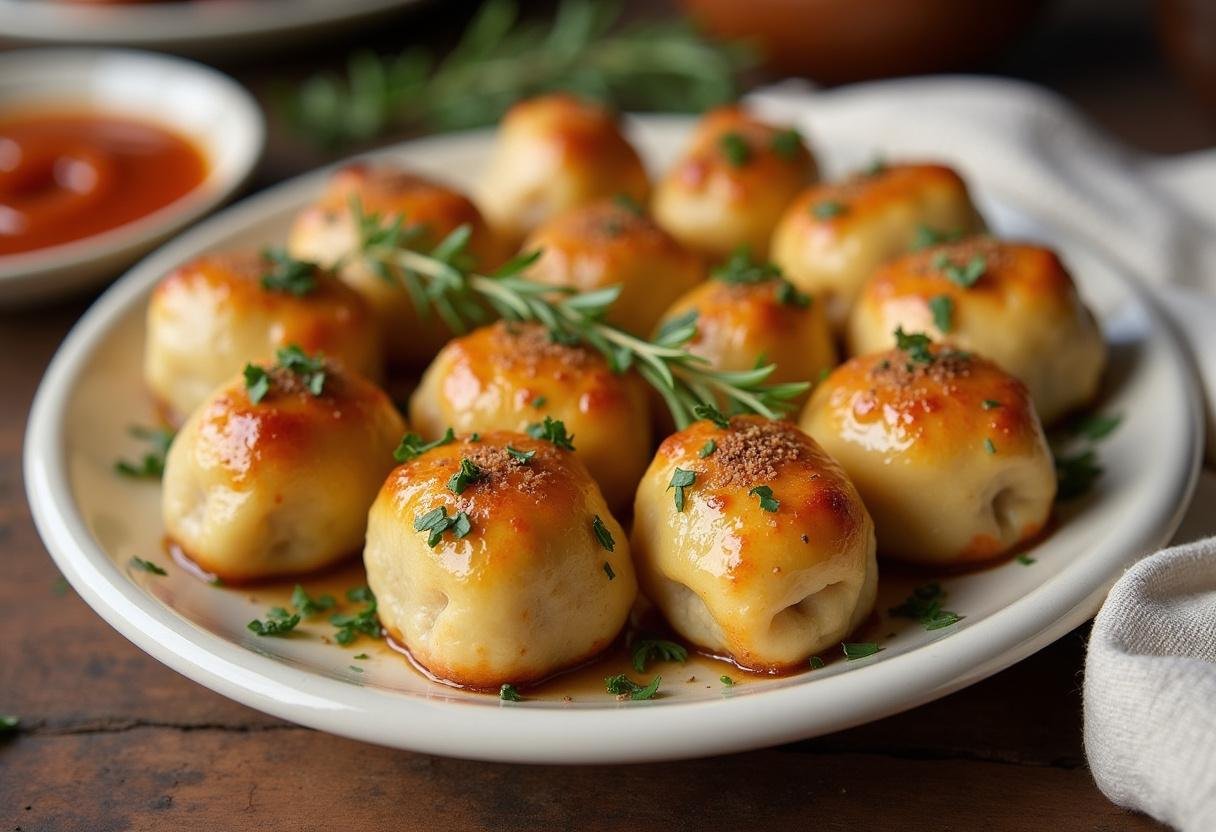
2. Understanding the Basics of Knödel
Before diving into the roasting process, let’s understand what makes a **Knödel** so special. **Knödel**, or dumplings, are a staple in German cuisine, often made from potatoes, bread, or a combination of both. The key to a great **Knödel** lies in the texture – it should be soft and fluffy on the inside while maintaining a slight firmness. Roasting adds a delightful crispiness to the outside, making it an irresistible treat. The dough needs to be prepared just right, ensuring the **perfekte Knödel** every time. Die perfekte Beilage zu Ihren Knödeln wäre vielleicht ein
Sauerkraut-Rindfleisch-Erlebnis?
Different regions have their own variations, but the core principles remain the same: quality ingredients and careful preparation.
3. Gathering Your Ingredients
To create the **perfekte Knödel**, you will need the following ingredients:
- 500g all-purpose flour
- 1 tsp salt
- 1 packet (7g) dry yeast
- 300ml warm milk
- 50g melted butter
- 2 eggs
- Optional: chopped parsley or nutmeg for added flavor
Ensure your ingredients are fresh and of high quality for the best results. Using warm milk is crucial for activating the yeast and ensuring a light and airy dough, vital for the **perfekte Knödel** texture. Adjust the salt to your preference, but a teaspoon is generally sufficient to balance the flavors. Wer es etwas herzhafter mag, kann die Knödel auch zu einer
deftigen Bauernpfanne servieren.
4. Step-by-Step Guide to Making Perfectly Roasted Knödel
First Step: Preparing the Dough
In a large bowl, combine the flour and salt. In a separate bowl, dissolve the yeast in warm milk. Add the melted butter and eggs to the yeast mixture, then pour it into the flour. Mix well until a smooth dough forms. Cover the bowl with a cloth and let it rise in a warm place for about 1 hour, or until doubled in size. This rising process is crucial for achieving the desired fluffy texture in your **perfekte Knödel**.
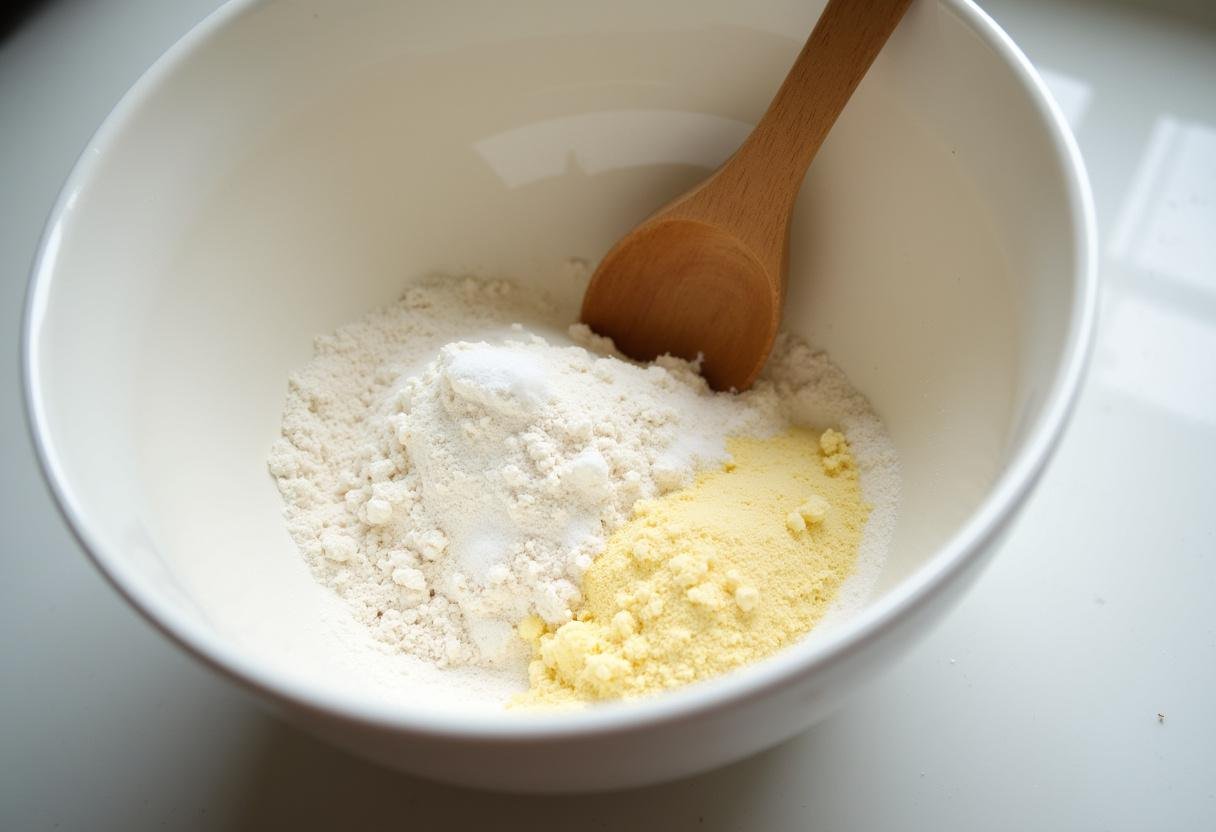
Second Step: Shaping the Knödel
Once the dough has risen, gently punch it down to release the air. On a lightly floured surface, divide the dough into equal portions. Roll each portion into a round ball, about 2-3 inches in diameter. This process requires a gentle touch to maintain the airiness of the dough, ensuring a soft and fluffy **Knödel**. Place the formed **Knödel** on a lightly floured baking sheet.

Third Step: Boiling the Knödel
Bring a large pot of salted water to a boil. Carefully drop the **Knödel** into the boiling water. Reduce the heat to a simmer and cook for about 15-20 minutes, or until they float to the surface and are cooked through. This boiling process helps to give the **Knödel** their signature soft and fluffy texture. Remove the **Knödel** from the water and let them drain on a wire rack.

Fourth Step: Roasting for Perfection
Preheat your oven to 200°C (400°F). In a large skillet, melt some butter or use cooking oil. Place the boiled **Knödel** in the skillet and roast in the preheated oven for about 20-25 minutes, or until they are golden brown and crispy on the outside. Turning them halfway through ensures even browning, giving you the **perfekte Knödel**. Keep a close eye to prevent burning.
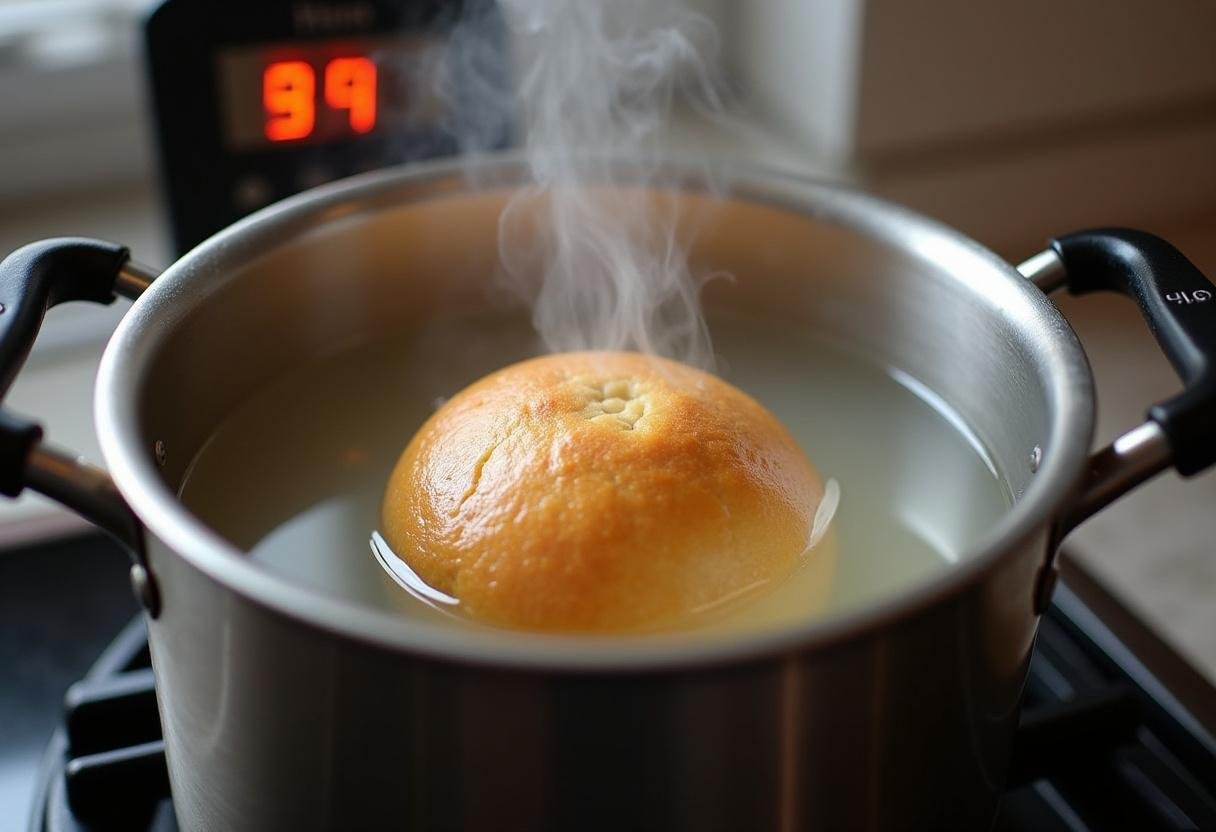
5. Tips for Achieving the Perfect Texture
Achieving the **perfekte Knödel** texture requires attention to detail. Here are some essential tips:
- Ensure the milk is warm but not hot to properly activate the yeast.
- Don’t overwork the dough; gentle handling ensures a light texture.
- Allow the dough to rise in a warm, draft-free environment.
- Simmer the **Knödel** gently; boiling too vigorously can make them tough.
- Turn the **Knödel** halfway through roasting for even browning.
By following these tips, you’ll be well on your way to creating **Knödel** that are soft, fluffy, and utterly delicious. Für noch mehr Inspiration, schauen Sie sich doch mal dieses Rezept für
Bayerische Brezenknusperfreude an!
6. Serving Suggestions
**Perfekte Knödel** are incredibly versatile and can be paired with a variety of dishes. Here are some serving suggestions:
- Serve with a rich gravy or sauce for a hearty meal.
- Pair with roasted meats such as pork, beef, or chicken.
- Add them to soups or stews for a comforting touch.
- Enjoy them as a side dish with sautéed vegetables.
For an authentic German experience, serve your **Knödel** with Sauerbraten or Rouladen. Oder wie wäre es mit ein paar
Schwarzwälder Schinkenröllchen als Vorspeise?
The possibilities are endless – get creative and find your favorite pairings!
7. Variations and Add-ins
While the classic recipe is delicious, feel free to experiment with variations and add-ins to customize your **Knödel**. Consider these ideas:
- Add diced bacon or ham to the dough for a savory flavor.
- Incorporate herbs such as rosemary or thyme for an aromatic twist.
- Mix in grated cheese for a cheesy **Knödel**.
- Use different types of flour, such as whole wheat or rye, for a unique texture.
These variations can add depth and complexity to your dish, making your **perfekte Knödel** truly unique. Eine andere spannende Option ist dieses Rezept für
leckere Pfälzer Saumagenröllchen.
Weitere Informationen über traditionelle deutsche Knödel finden Sie auf daringgourmet.com.
8. Common Mistakes to Avoid
Even with a detailed recipe, common mistakes can hinder your quest for **perfekte Knödel**. Here are some pitfalls to avoid:
- Using milk that is too hot or too cold can affect yeast activation.
- Overworking the dough can result in tough **Knödel**.
- Not allowing the dough to rise sufficiently can lead to a dense texture.
- Overcrowding the skillet during roasting can prevent even browning.
By being mindful of these potential errors, you can ensure a flawless outcome every time. Und wenn Sie mal etwas ganz anderes ausprobieren möchten, wie wäre es mit einer
9. Conclusion
Congratulations! You’ve now mastered the art of making **perfekte Knödel** with a soft and fluffy texture. By following this guide, you can confidently create these delightful dumplings for any occasion. Remember, the key to success lies in careful preparation, quality ingredients, and attention to detail. Enjoy the process and savor the delicious results of your homemade **Knödel** . Zum Nachtisch passen hervorragend
Whether you stick to the classic recipe or experiment with variations, these **Knödel** are sure to become a favorite in your culinary repertoire. Happy cooking!
Oder wie wäre es mit einer leckeren
Print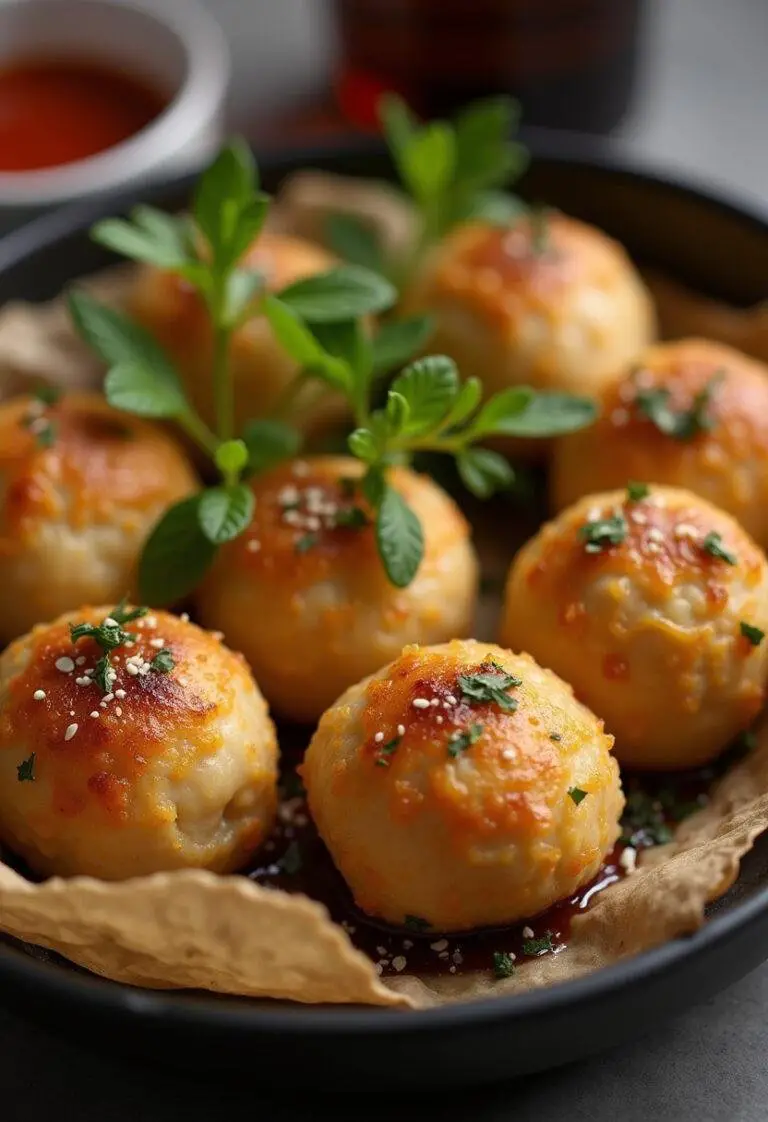
Perfectly Roasted Knödel with Soft and Fluffy Texture
Genießen Sie perfekt geröstete Knödel mit einer weichen und flauschigen Textur, die Ihre Geschmacksknospen verwöhnen werden!
- Total Time: 1 Stunde
- Yield: 4 Portionen 1x
Ingredients
- 500g Mehl
- 1 TL Salz
- 1 Päckchen (7g) Trockenhefe
- 300ml warme Milch
- 50g geschmolzene Butter
- 2 Eier
- Optional: gehackte Petersilie oder Muskatnuss für zusätzlichen Geschmack
Instructions
- Mehl und Salz in einer großen Schüssel vermengen.
- Die Hefe in warmer Milch auflösen und mit geschmolzener Butter und Eiern verrühren.
- Die Mischung in das Mehl einrühren, bis ein glatter Teig entsteht. Abdecken und 1 Stunde an einem warmen Ort gehen lassen.
- Den Teig sanft in Portionen aufteilen und zu runden Bällen formen.
- In einem großen Topf Salzwasser zum Kochen bringen und die Knödel 15-20 Minuten garen, bis sie an die Oberfläche schwimmen.
- Die Knödel abtropfen lassen und auf ein Backblech legen.
- Den Ofen auf 200°C vorheizen und die Knödel in einer Pfanne mit Butter 20-25 Minuten rösten, bis sie goldbraun sind.
Notes
- Verwenden Sie warme, aber nicht heiße Milch für die Hefeaktivierung.
- Der Teig sollte vorsichtig behandelt werden, um die Leichtigkeit zu bewahren.
- Die Knödel müssen sanft gekocht werden, um eine zähe Konsistenz zu vermeiden.
- Für eine gleichmäßige Bräunung die Knödel während des Röstens wenden.
- Prep Time: 20 Minuten
- Cook Time: 40 Minuten
- Category: Beilage
- Method: Rösten, Kochen
- Cuisine: Deutsch
- Diet: Vegetarisch
Nutrition
- Serving Size: 1 Knödel
- Calories: 250 Kcal
- Sugar: 1g
- Sodium: 350mg
- Fat: 8g
- Saturated Fat: 5g
- Unsaturated Fat: 3g
- Trans Fat: 0g
- Carbohydrates: 40g
- Fiber: 2g
- Protein: 7g
- Cholesterol: 70mg

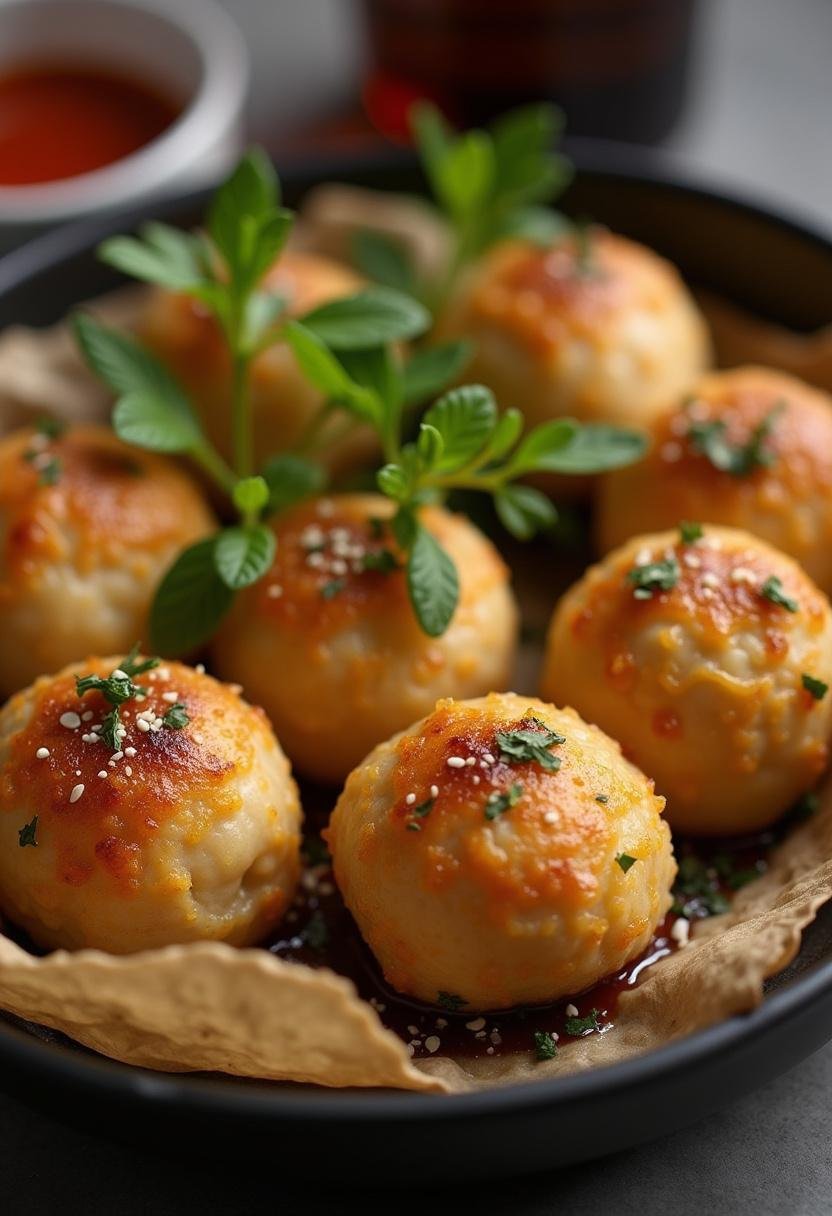
4 thoughts on “Perfectly Roasted Knödel with Soft and Fluffy Texture”